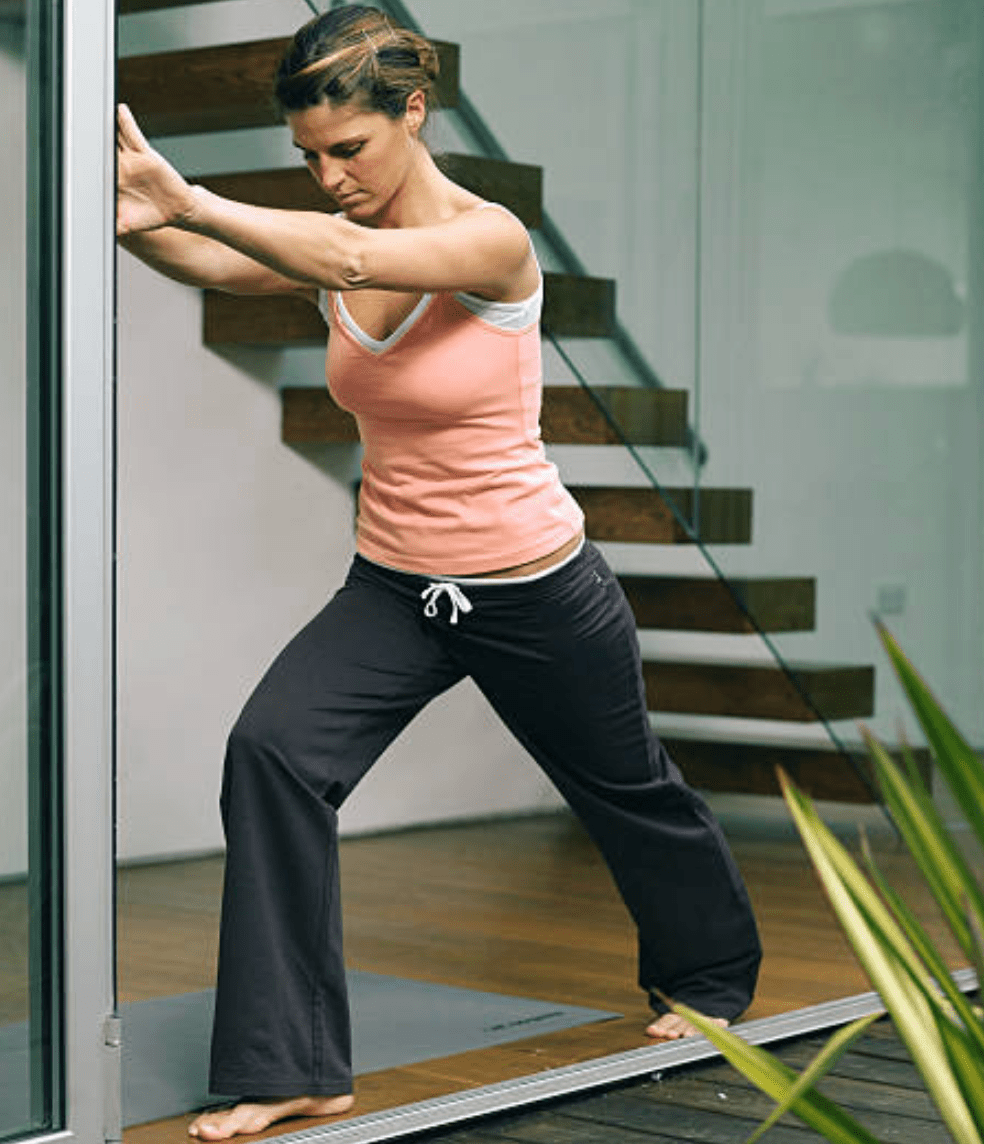Have you ever experienced a slight ache or tightness in your shoulder? If so, then you might have tried rotating your shoulder to get rid of the discomfort.
Today, shoulder pain is quite common and this discomfort can be inconvenient.
Unfortunately, untreated shoulder pain can lead to neck pain, difficulty breathing, and general discomfort that interferes with daily life.
So, in today’s blog, I will showcase some simple shoulder pain exercises that will help you manage shoulder pain more effectively. Let us start exercising.
Causes of shoulder pain
The shoulder joint is extremely flexible but not very strong. So, if you move it strangely, use too much force, or repeat the same motion too frequently, it can easily become injured.

Also, some medical conditions can cause shoulder pain. In the following section, we have divided the causes into two categories.
Sudden injuries
Sudden injuries, also known as acute injuries, can result from a variety of activities, including falling on your shoulder or twisting it unintentionally. These injuries may include:
- Bruises
- Tendon injuries
- Ligament injuries
- Nerve injuries
- Torn Rotator cuff
- Muscle strains
- Fractures
- Dislocations
After a sudden shoulder injury, you might experience bruising or swelling. If a nerve or blood vessel is injured, you might even feel tingling or numbness.
Overuse injuries
Overuse injuries are different from sudden injuries. They develop gradually over time due to repetitive activities.
These injuries occur when the shoulder joint or surrounding tissues are overstressed. You may not realize something is wrong until you experience constant shoulder pain. Overuse injuries may include:
- Bursitis
- Tendinitis
- Muscle strains.
- Frozen shoulder
- Impingement syndrome
Apart from sudden and overuse injuries, there are other common reasons for shoulder pain, such as:
- Bad posture
- Osteoarthritis
- Herniated disk
- Calcium
- Infections
Understanding Physiotherapy
Physiotherapy, also known as physical therapy, is a healthcare profession that diagnoses, treats, and prevents a variety of conditions.
A physiotherapist’s primary goal is to restore movement and function to the affected area as well as the entire body.
They achieve this goal through a variety of techniques, including acupuncture and hydrotherapy.
In addition, physiotherapists teach patients about preventive measures and strategies after treatment.
Physiotherapy treatments for shoulder pain
Physiotherapy treatments can help you in lowering your shoulder pain. These treatments include:
- Heat and cold therapy
- Manual therapy techniques
- Stretching and strengthening exercises
- Joint mobilisation
- Nerve stimulation.
Heat and cold therapy
Switching between hot and cold packs can help you in relieving pain, reduce stiffness and inflammation, and promote healing.
However, this method is ideal for acute pain or injury.
Experts recommend applying a cold pack to the sore area for about 20 minutes and then applying heat for at least 15 minutes.
Remember not to put the ice pack directly on your skin while doing this.
Manual therapy techniques
Orthopaedic manual therapy is a type of physical therapy in which the therapist examines and treats your body through hands-on techniques.
This method examines your physical, emotional, and social well-being. Gentle stretching, massages, and exercises are common techniques used to relieve pain, improve muscle function, and promote tissue healing.
These methods promote healing and reduce pain, making them both comfortable and effective.
Stretching and strengthening exercises
Gentle stretching and strength-building exercises can help in relieving pain and make you strong. These exercises are adjusted based on the severity of your injury and your ability to move.
The goal of shoulder exercises is to improve your posture and strengthen your arms.
Joint mobilization
Shoulder mobilization aims to move all your shoulder joints. Therapists use techniques such as sliding the joint in various directions, rotating it up and down, and moving it diagonally.
These techniques help you move better, relieve pain, and reduce your chances of getting hurt again in the future.
Nerve stimulation
Recent research suggests that Peripheral Nerve Stimulation (PNS) can alleviate both short-term and long-term shoulder pain.
This method uses electric currents to target specific nerves associated with shoulder pain. A small device is placed near a nerve, and when it emits electric signals. You might experience a gentle tingling sensation.
This sensation gradually reduces the pain. And, you can adjust the signal strength with a controller or a phone app.
Physical therapy exercises for shoulder pain
Your physical therapist will suggest exercises tailored to your shoulder injury. There are exercises you can do at home to relieve general shoulder pain, though.
These exercises can help to relieve tightness and tension in your shoulder, potentially preventing future injuries. But, remember start slowly and carefully.
Across the chest
To perform across the chest exercise you must cross one arm over your chest and hold it in the other hand. Then, switch arms and repeat.

This is a simple shoulder exercise that can be performed anywhere. It’s ideal if you are working for a long desk job.
This exercise helps to keep your shoulder joint flexible and increases its range of motion.
Doorway stretch
Place yourself in a doorway and bend your elbows to a 90-degree angle. Now, slightly lean forward and place one foot forward.

Hold this position and maintain balance while pressing your palms against the doorway.
Now, repeat with the other foot. Perform this exercise several times to strengthen and expand your shoulders and chest.
Neck release
Lower your head gently until your chin touches your chest, feeling a stretch in the back of your neck. This will release tension in your shoulder and neck muscles.

Next, raise your head slightly and tilt to one side to stretch the opposing shoulder. Repeat the stretch on the other side as well.
Pendulum
To perform this therapy one hand should be resting on the back of a chair while the other arm is left hanging. Make a few clockwise and anticlockwise circles with it.

Repeat on the other side. This is a great way to warm up your joints before a workout and it will help you become more flexible if you perform it several times a day.
Chest expansion
Firstly, hold a strap or towel in your arms. To open your chest and raise your chin, gently pull your shoulder blades together. Get your hands closer together on the strap or towel for a more intense stretch.

This stretch broadens your shoulder range of motion and helps in improving flexibility.
Downward dog
Downward Dog in yoga, is great for stretching and strengthening your shoulders and back muscles.

To perform it press your palms into the ground to raise your hips. Keep your knees slightly bent if required, and evenly distribute your weight between your palms and feet.
Your spine should be in a straight line, your head facing your feet, allowing your shoulders and back to stretch properly.
Seated twist
If you regularly practise yoga then you might be familiar with the seated twist. To perform this twist you need to keep your hips facing forward and begin the stretch from your lower back.

Keep your knees and ankles aligned. As you twist to one side, place the opposite hand on your thigh. Hold the stretch, then repeat on the opposite side.
This stretch is beneficial to both your shoulders and neck.
How does Physiotherapy help with Shoulder Pain?
When you have shoulder pain, the first step in physiotherapy is an extensive evaluation. To make a diagnosis, your movements are observed as well as physical examinations performed.

Mobility tests, joint tests, and scans may be used to determine the nature and extent of the injury.
Based on the diagnosis, a personalized treatment plan is developed, which may include a variety of shoulder pain exercises.
Consistency and adjustments are done in the treatment plan as you progress. Thus, it will help in reducing pain, stabilizing muscles and joints, and increasing strength.
How can you prevent shoulder pain?
- Maintain proper posture by avoiding slouching or hunching over during daily activities.
- Be aware of your body position and adjust as needed.
- Take breaks and rest when necessary, especially if the activity causes pain.
- Reaching overhead, lifting heavy objects, or bending forward all such activities should be done with caution.
These techniques can help prevent shoulder pain and improve overall shoulder health.
Other treatments for shoulder pain
Apart from these exercises, you can avoid shoulder pain by following these simple tips and home remedies:
- Use the RICE method: rest, ice, compress, and elevate your shoulder. You can also use a heating pad.
- Consider taking painkillers such as ibuprofen or acetaminophen. Alternatively, natural remedies such as turmeric, willow bark, and cloves can be beneficial.
- Apply menthol rubs, arnica cream, or essential oil blends to the affected area multiple times per day.
- Regular massage and acupuncture sessions can alleviate pain and restore balance.
- Consider manipulative therapies like chiropractic adjustments, osteopathy, and rolfing.
Thus, these treatments can reduce shoulder pain and improve overall health.
When to consult a doctor
It is vital to see a doctor or physical therapist if you have difficulty moving your shoulders or if your pain worsens after a week of treatment.
Seek medical attention right away if you have severe pain in both shoulders or if you develop a fever.
Summing up
Thus, managing shoulder pain requires a combination of physiotherapy exercises, treatments, and preventive measures.
Physiotherapy treatment includes various techniques that are essential for pain relief and improving shoulder function.
Individuals can find pain relief and improve their shoulder health by following a personalized treatment plan and incorporating at-home exercises.
Remember to consult with a healthcare professional for the best advice tailored to your specific shoulder condition.